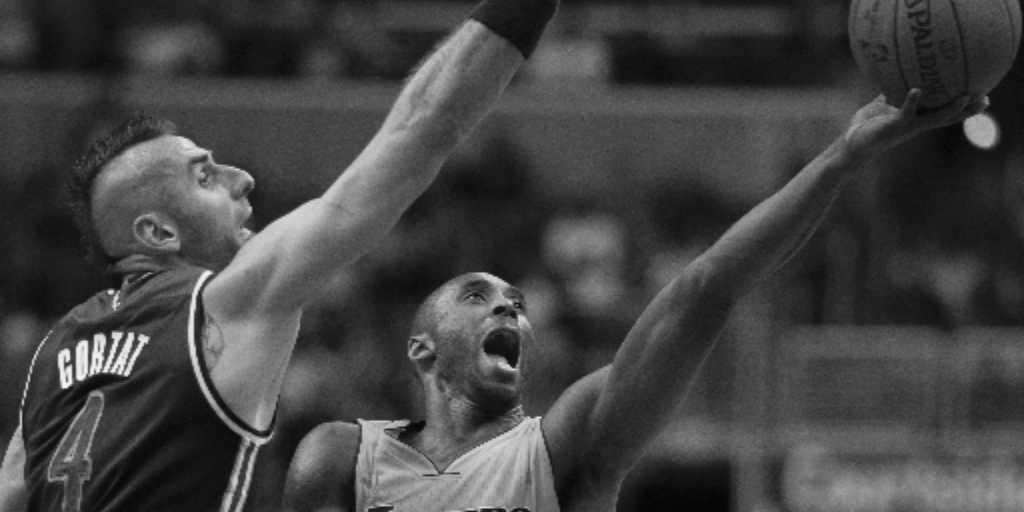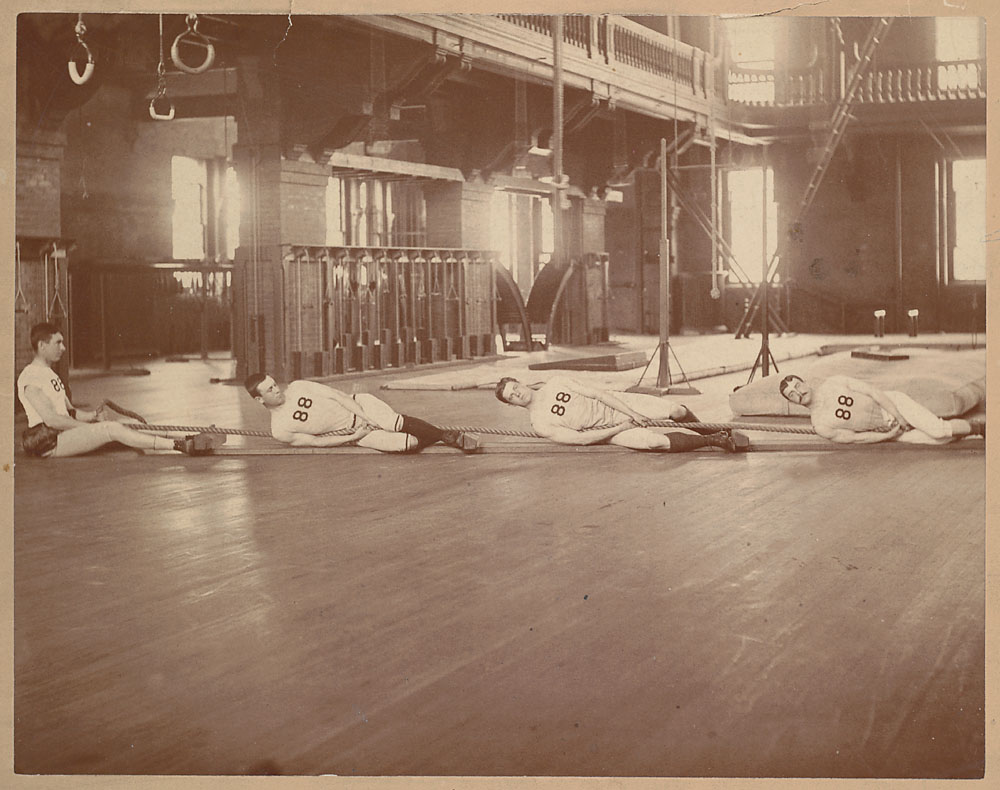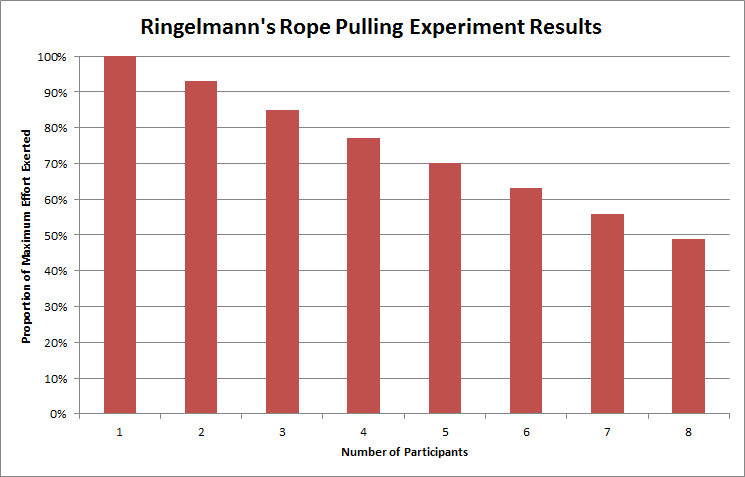
Big teams are bad for productivity. The bigger the team, the less people do.
Maximilien Ringelmann discovered this more than 100 years ago. The French engineering professor measured effort from students in a simple rope pulling exercise. Not only did people exhibit less individual effort while pulling as a group, individual effort quickly diminished as the size of the group increased.
Ringelmann found that eight people didn’t even pull as hard as four. It became known as the Ringelmann effect.
Unfortunately, many businesses are run like a giant game of tug of war. There can be a top notch team, a clear objective, everyone working toward the same goal. And maybe it’s successful. But who actually helped pull the rope? Did they do their best? We’ll never know. Stop running your business like tug of war. Want to be successful? Run it like an NBA team.
Social loafing and why it kicks in with big teams
Ringelmann’s discovery helped coin the term social loafing, or the phenomenon of people exerting less effort in groups than they do individually.
In the 1970’s, Alan Ingham and three colleagues at the University of Massachusetts Amherst decided to recreate Ringelmann’s experiment. These researchers, however, put a a clever twist on the experiment that led to a brilliant discovery.
Some students were asked to pretend they were pulling on the rope, but not actually pull. Their teammates, who weren’t in on the ruse, still exerted less effort. In other words, it didn’t matter if they were actually working with more people or not, what mattered is that they thought they were.

The research didn’t stop there. Over and over, academics have studied social loafing with various tasks and measuring sticks. Wrote Mark de Rond, University of Cambridge professor and author:
“[A]t least another eighty studies on social loafing have been published, based on a variety of tasks — including such complex tasks as brainstorming or rating poems for quality. In these experimental contexts, the research shows that people tend to prefer teams of four or, at most, five members. Anything lower than four was felt to be too small to be effective, whereas teams larger than five became ineffective.”
Researchers have explored several reasons why social loafing kicks in.
For one, it’s easier for people to feel lost in the crowd. If your efforts are one in 1,000, it’s hard to see the impact of your hard work.
The term “sucker effect” was utilized in research by Norbert L. Kerr in the Journal of Personality and Social Psychology. Kerr’s research showed that people are less likely to perform optimally when they feel a likelihood that others on the team are slacking off, thus putting an extra burden on themselves. Nobody wants to be the sucker carrying the weight for everyone else.

Transparency and feedback: The social loafing antidote
Social loafing seems inevitable. Over and over, humans exhibit the traits of working less on smaller teams. But not all is lost. There are steps that can be taken to avoid social loafing.
You can always keep groups small.
Amazon Founder and CEO Jeff Bezos famously institutes his two-pizza rule, meaning teams on a project should be small enough to be fed with two pizzas. This works out to about 6 or 7 people.
But even this approach includes limitations. What if the task at hand can’t be divided amongst smaller groups? And besides, if we’re dividing into smaller teams, are we even collectively working as a team anymore? Or are we now separate groups?
The best thing that can be done? Make team members individually accountable. And make that accountability public.
Or as de Rond put it, “provide greater transparency by opening up your feedback mechanism.”
In other words, keep score.

How sports cracks the code for individual motivation
Imagine if Ringelmann’s French students had a big scoreboard hanging above their heads. Imagine they’re told that everyone’s individual effort will be measured and put on the scoreboard. If you don’t pull the rope, everyone will see a big zero by your name. It’s easy to see that individual efforts would go up.
Professional sports has this figured out already. For one, there’s a large scoreboard at the game tracking team performance and making it incredibly visible. But it doesn’t stop there. Individual performance stats are tracked and made public, too. If someone on the team is a low performer, everybody knows it. The owner knows it, the coach, fans, teammates. Even the guy directing traffic in the parking lot.
But this works both ways. If the player’s on a hot streak, all those same people know. A lot of high fives start coming in. It feels pretty good. It’s motivating.
Unfortunately, business has been slow to get the hint.
“Reality is such that few corporate environments allow for that sort of transparency,” de Rond writes.
Though some innovative companies are changing that. Our friends at Buffer, for example, have taken transparency to new levels through their transparency dashboard, which makes public details like how much salary and equity everyone gets.
The Buffer team also uses iDoneThis to keep track of what each person accomplished each day. Just by replying to a daily email, everyone on the team gets a snapshot of what their teammates are accomplishing. At iDoneThis, we’re constantly using the tool to comment on our teammates’ accomplishments and push the Like button. It’s a great way to reinforce the feedback mechanism.

In modern offices, it can be hard to actually see what the people around you are doing. To avoid social loafing, make progress more visible.
Try to make your organization less like tug of war match and more like an NBA game. Yes, the team’s effort is what ultimately counts. But measuring and reporting individual efforts along the way will make people more motivated. Once you get systems like this in place, you can see that those around you are working hard.
You can see that your teammates are actually pulling the rope.
P.S. If you liked this article, you should subscribe to our newsletter. We’ll email you a daily blog post with actionable and unconventional advice on how to work better.
